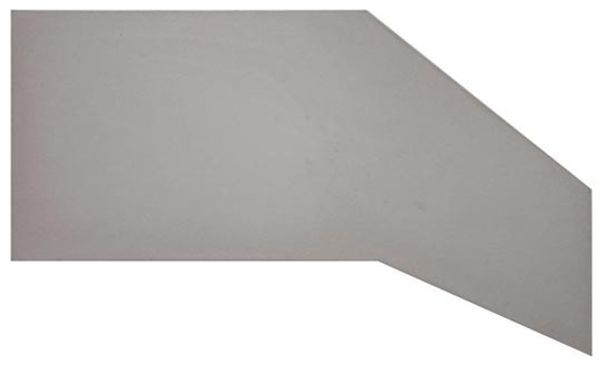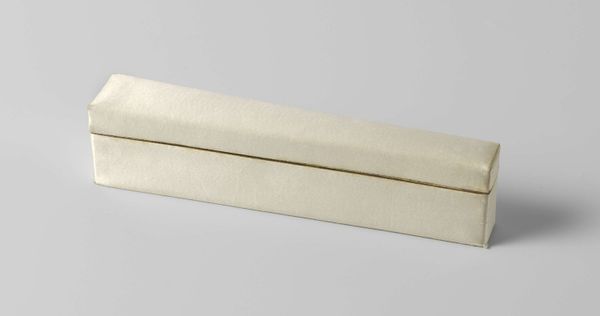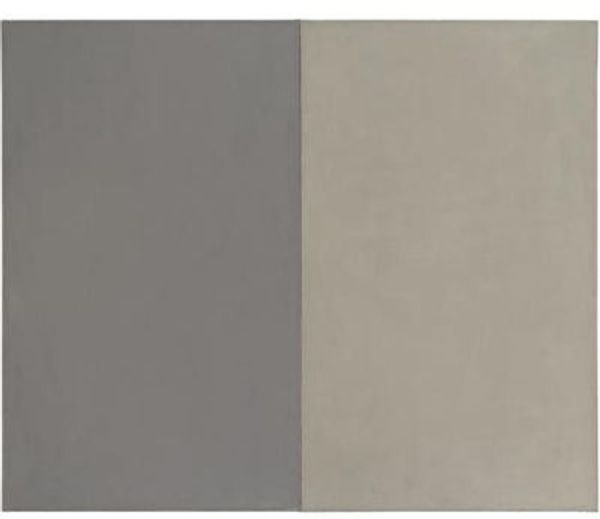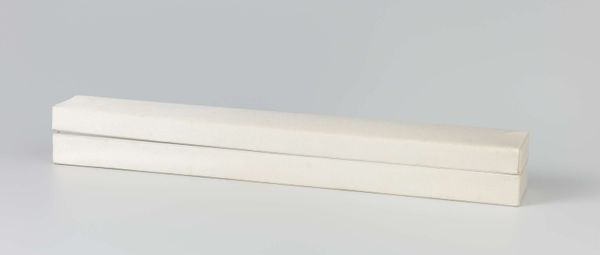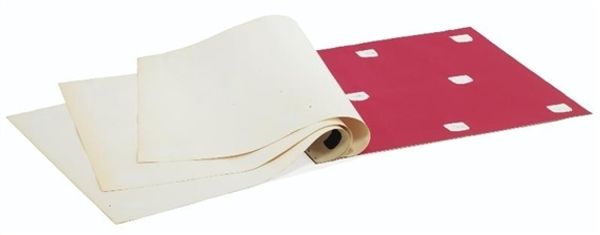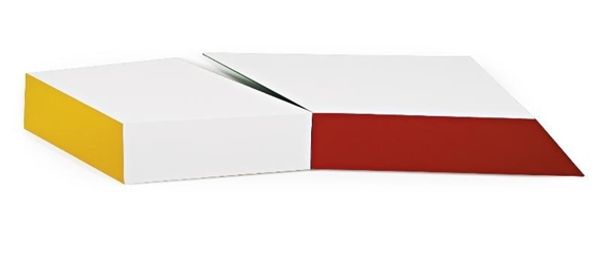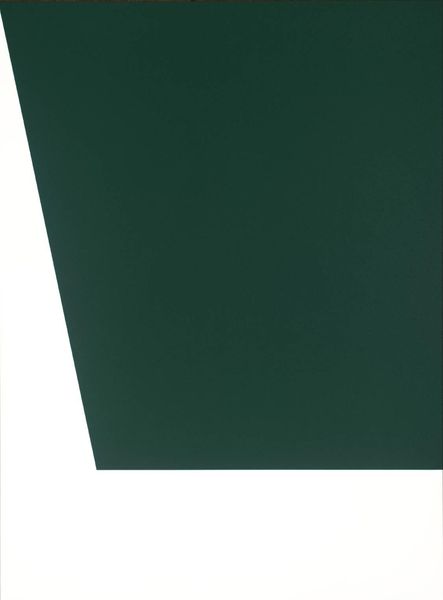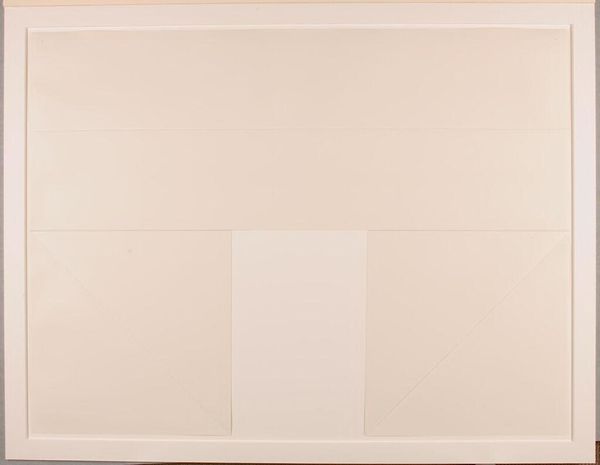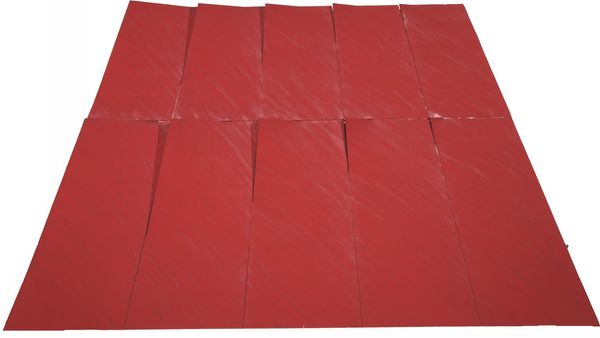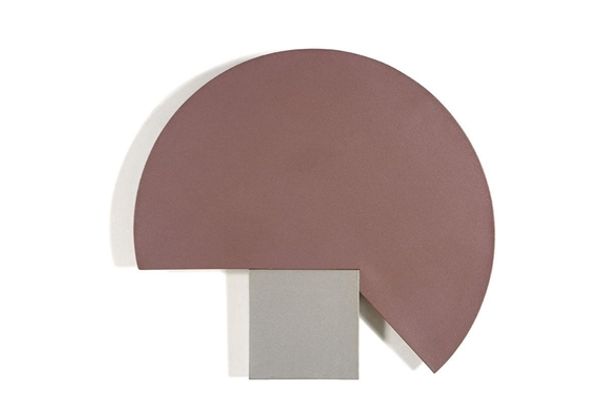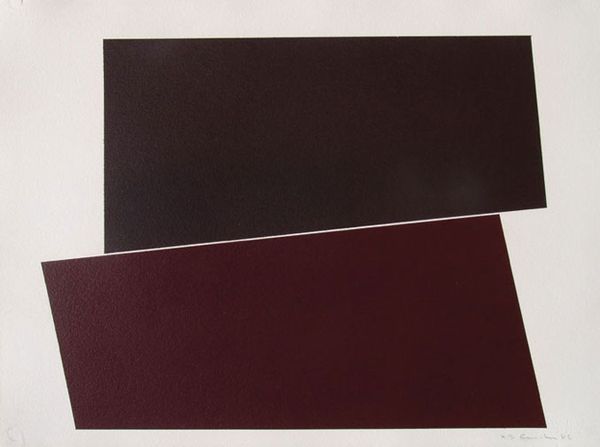
paper, sculpture
#
paper
#
geometric
#
sculpture
#
abstraction
#
modernism
Copyright: Charles Hinman,Fair Use
Curator: Here we have Charles Hinman’s “Enroute,” a paper sculpture from 1982. Editor: It strikes me immediately as something caught between painting and sculpture. The pastel hues feel almost timid against the boldness of the three-dimensional forms. Curator: That ambiguity is very intentional, I think. Hinman was interested in pushing the boundaries between mediums. Consider how the surfaces are built up – not just painted but sculpted, like layered construction, drawing attention to the artist’s labor and material manipulation. Editor: And in the context of its time, the early 80s, we’re seeing a rise in postmodern art, questioning the rigid definitions that Modernism imposed. I wonder if “Enroute,” with its almost playful geometry, is engaging with those broader cultural conversations about artistic hierarchy? Was paper merely the economical or primary choice available to Hinman, or a statement about consumer culture? Curator: Exactly. The very use of paper, traditionally a surface for drawing or painting, and its elevation to the sculptural invites this consideration. We might also ask where the paper comes from? The work process could incorporate reclaimed or repurposed resources too, offering additional socio-economic layers for interpretation. Editor: The placement of these simple, shaped forms almost invites a sense of movement too; despite their simplicity, a tension exists as to how each leans on the other. I do wonder, did Hinman see himself challenging the art market? Was he addressing the high-art sphere by using common material? Curator: His earlier shaped canvases of the 60s undoubtedly established that challenge of medium and market expectations. Hinman clearly continues a modernist legacy, focusing on form and abstraction, yet deliberately introduces an element of humble, mass-producible materials and shapes, thus encouraging engagement and demystification. Editor: It’s refreshing to see how the artist has turned common expectations completely on their head to present something as striking and unconventional as “Enroute.” It feels less precious in some respects, almost inviting us to interact, despite it being a sculptural work, perhaps urging art galleries toward more engagement in those early years. Curator: And by focusing on accessible materials and challenging established forms, he encourages reflection on the broader relationship between art, production, and the evolving expectations and material underpinnings of a consumerist society.
Comments
No comments
Be the first to comment and join the conversation on the ultimate creative platform.
